NBA Film Room: Mavs Finding Out How Much Better Suns Are Than Jazz
The list of reasons the Phoenix Suns finished with by far the best record in the NBA during the regular season is extensive. They can pose matchup problems for just about any team they face in a seven-game series.
The Dallas Mavericks are experiencing the Suns' wrath firsthand after winning a first-round series against the Utah Jazz, where exploiting matchups was critical in their success.
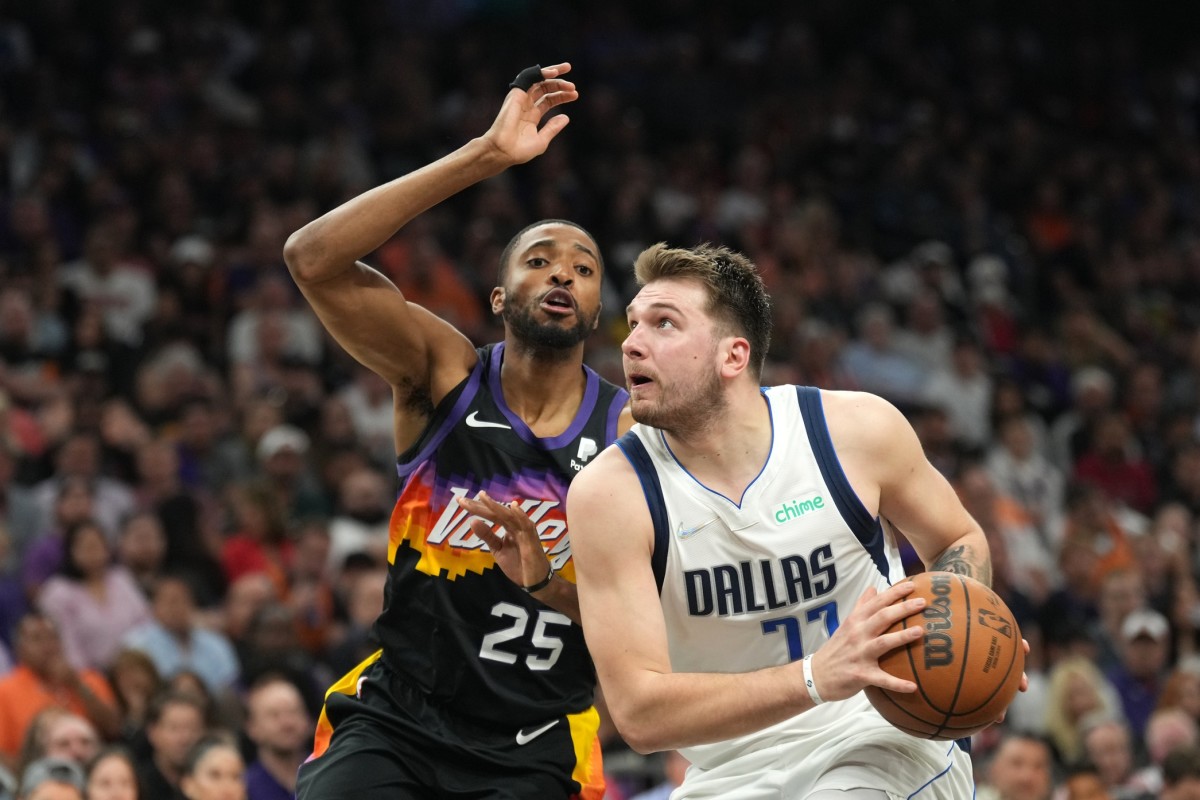
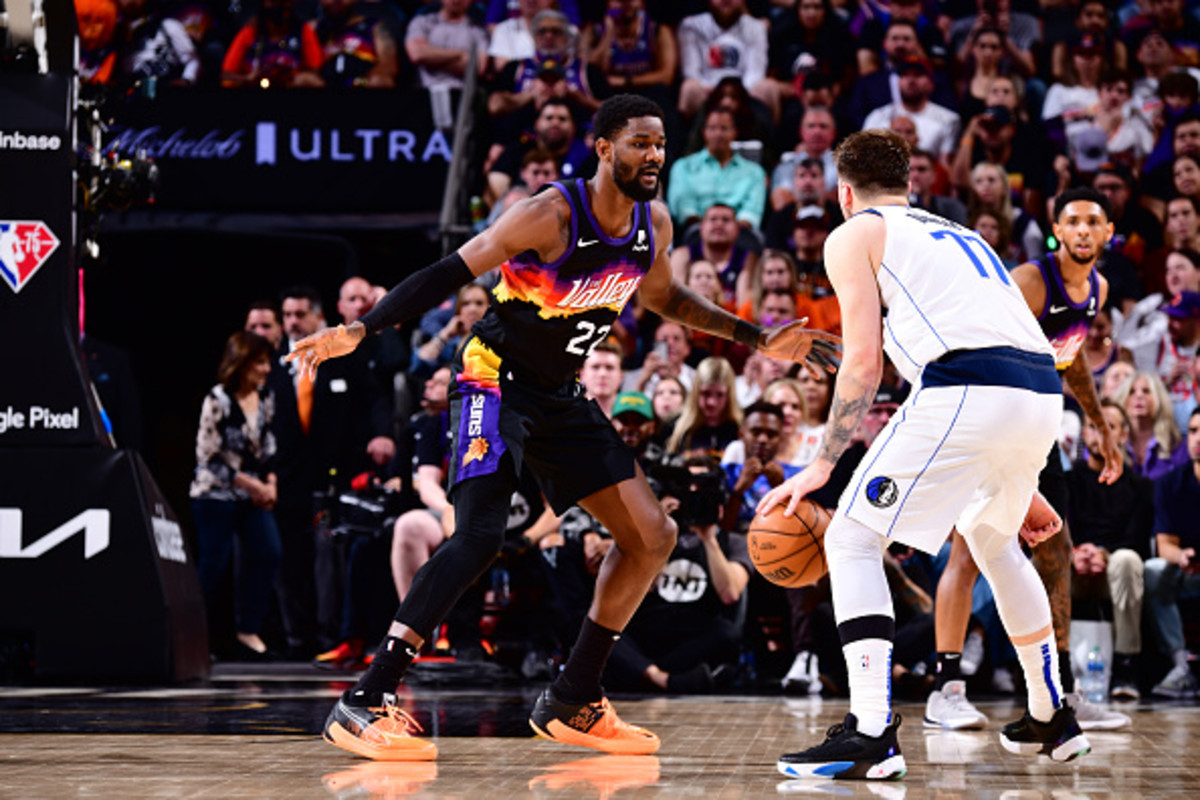
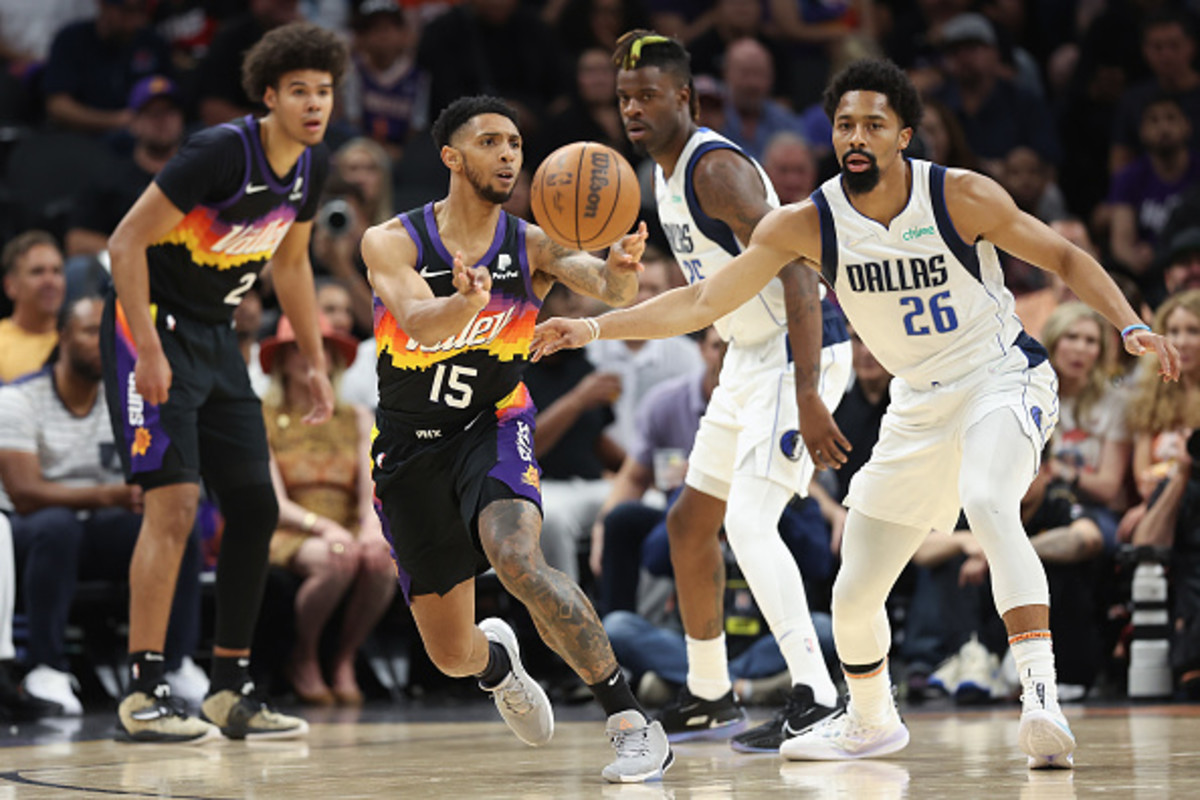
During each of the two games played in this series, the Mavericks found themselves trailing 9-0 coming out of the gate. Those slow starts have shown substantial differences between the Suns and the Jazz. The Suns' have been fierce in clutch time when it's time to close the game out all while posing no shortage of challenges in the meantime.
Now trailing 2-0 in the Western Conference Semifinals, time is running out for the Mavericks to figure it out.
Suns Blow Up Mavericks' Flex Dribble Handoff
As the Mavericks' first-round series progressed against the Jazz, they turned to a few of their go-to plays in the playbook at a higher rate and achieved substantial success. Among the top options was the Flex dribble handoff play for Doncic that Dallas typically started each half with throughout the regular season.
The Jazz opted to stay home on strong side shooters much tighter than the Suns have shown to do early in this series. When there is a clean lane for Doncic to turn the corner and get deep on the drive after receiving the handoff, the big defender has to decide whether to stay attached to the rim roller to prevent the lob or step up to pressure a floater.
At the start of Game 2, the Suns loaded up the strong side to completely prevent Doncic from attacking how the play is intended. Instead of being able to come straight off the handoff going to his right, he had to work his way back left and deal with Deandre Ayton in position to protect the rim.
Suns Neutralize Stack Pick & Roll
When running Stack pick-and-roll against the Jazz, the Mavericks knew there was a strong possibility that the back-screener would neutralize Gobert. Dallas also knew that Utah would avoid switching off the back-screener to contain the drive. It was a clear priority to deny switching when Conley and Clarkson were involved in traditional screening actions.
With Conley not switching and being assertive to contain Doncic on the drive, he could get to the rim without worrying about Gobert pressuring his finish. This opened up a lot of options that traditional high ball screens often weren't affording them.
The Jazz did choose to double Doncic using Gobert and the on-ball defender at times on the Stack pick-and-roll sequences. However, the floor was spread so well that one defender had to account for the rim roller and the back-screener flaring out to the 3-point line, with Doncic having a window to get him the ball.
A significant difference for the Suns' defense when guarding the Mavericks' Stack pick-and-roll plays starts with there not being a need for them to double the ball. Phoenix is willing to switch the defender guarding the back-screener onto Doncic to take away the drive. Having the length, attentiveness, and hustle as a unit to pressure the rim roll and the back-screener on the flare out.
The Suns came prepared to blow up the Mavericks' Stack pick-and-roll plays right out of Game 1. Paul switched off the back-screener and, suddenly, there were none of the advantages that were present against the Jazz. The defensive approach from Phoenix
When the Mavericks deployed Stack pick-and-roll to begin the second half in Game 2, they anticipated Paul would switch off the back-screener. Bullock flared out wide to the weak-side wing to make himself available for the pass, then making a quick extra pass to the corner, knowing the Suns would attempt to X-out on the closeout.
On a later Stack pick-and-roll play, the Suns still switched off the back-screener so Paul could neutralize any basic advantage by the big setting the screen. However, this time, Bridges stayed in a position to use his length to break up any pass to the corner.
Best Results Require Taxing Doncic
Given the struggles Brunson has experienced against the Suns, it has required Doncic to shoulder an even heavier offensive load than he typically does. He's posted a 39.9 percent usage rate so far in the series and has the highest usage rate in the playoffs by a considerable margin.
While Doncic often gets what he wants when he runs a high ball screen or has a mismatch after a switch, it can be taxing to rely on that over and over throughout a full game. It's not easy to break down defenders in isolation over and over throughout a game and that's asked of Doncic when going small.
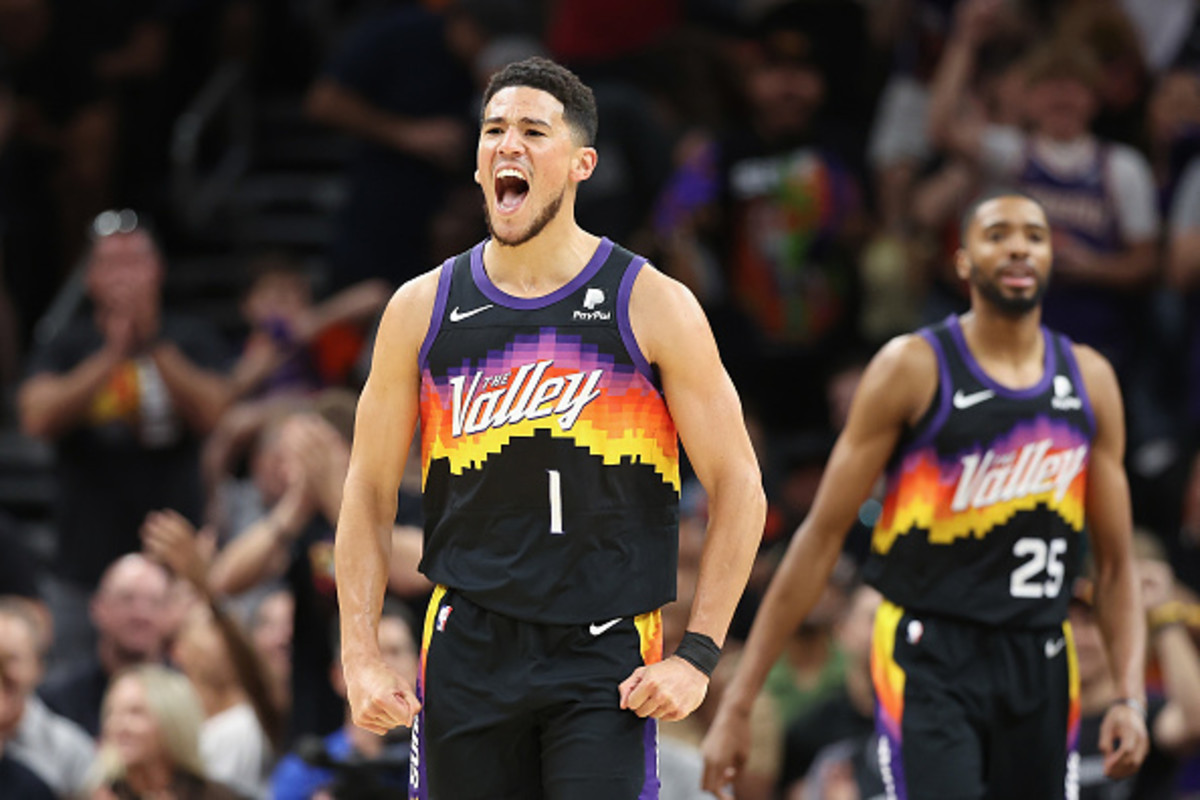
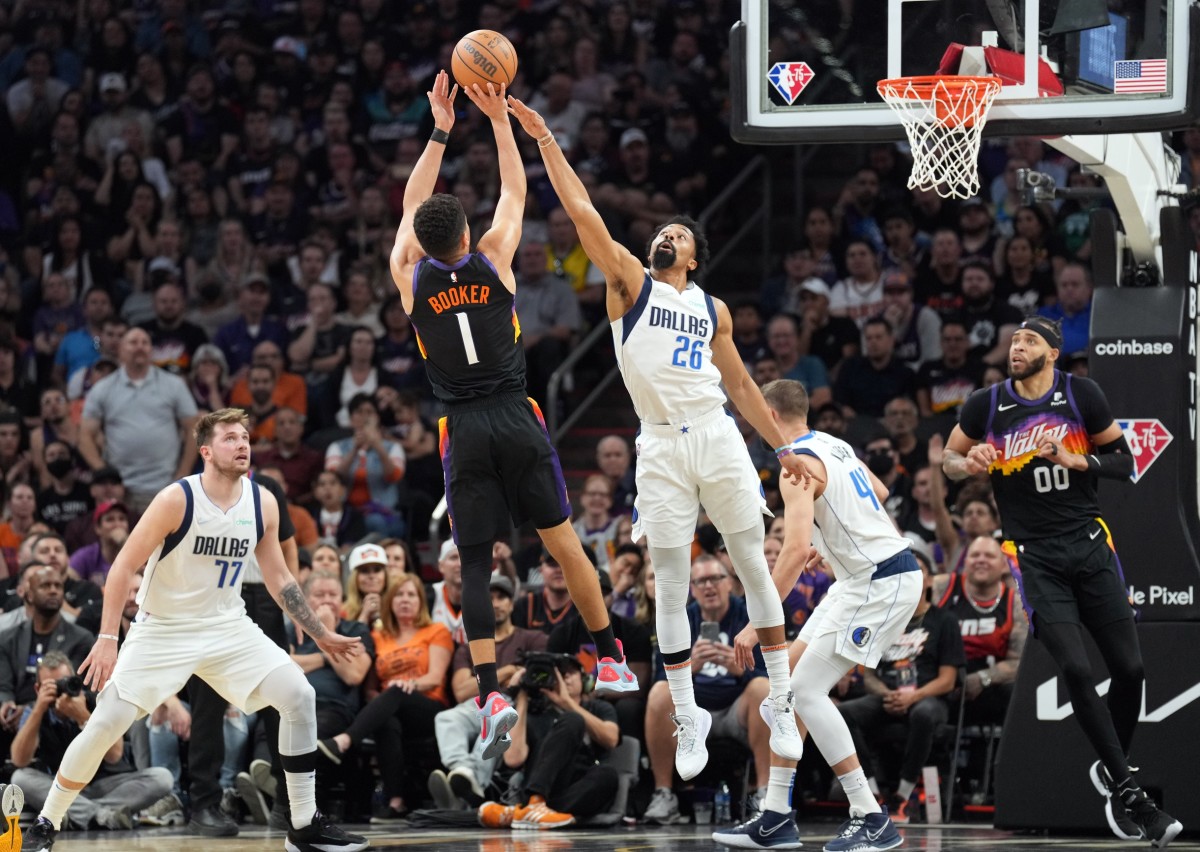
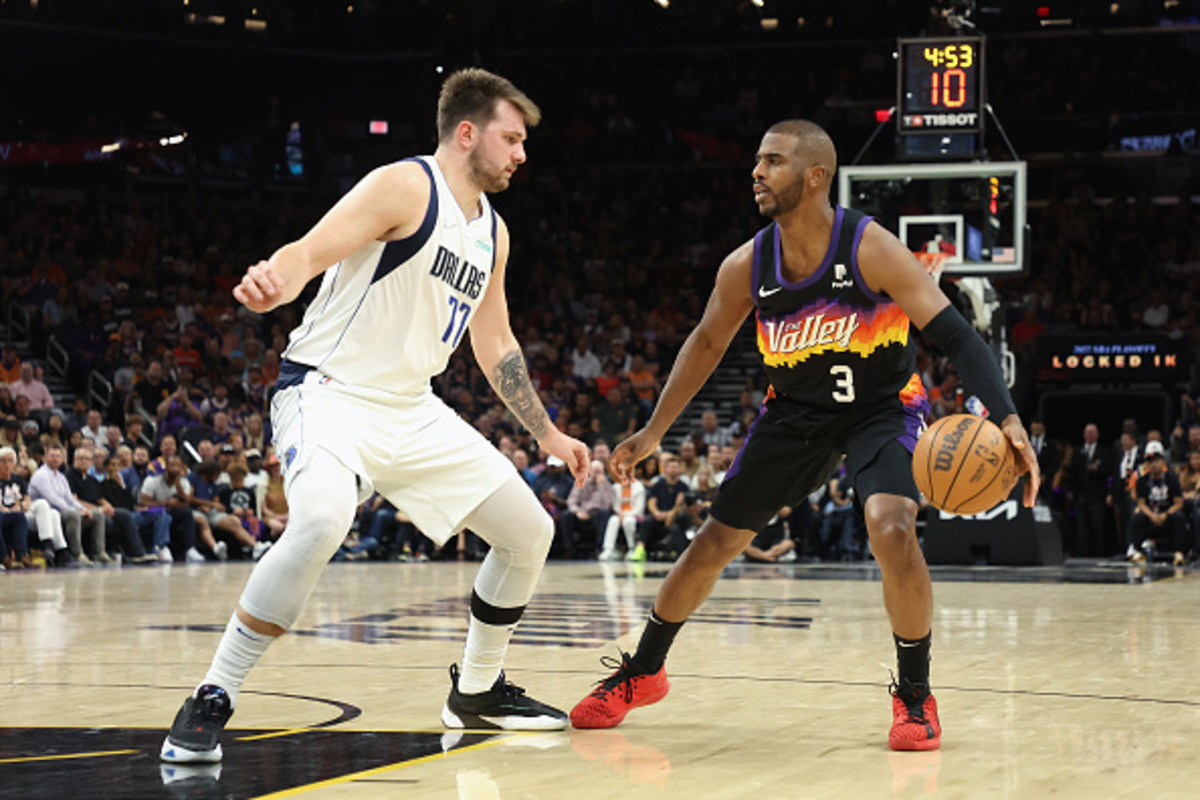
Keep in mind, that the Suns were viciously hunting Doncic on defense all throughout the second half. They know tiring him out on that end while also making him work with the ball in his hands by taking away simpler sequences affords them their best chance of containing him.
When the energy level is there, Doncic has shown he can take whoever he wants off the dribble to get into short-range, as long as there's reasonable spacing. Doing so repeatedly becomes more challenging since having such a significant level of offensive responsibility is taxing.
What the Suns are banking on with their defensive strategy is that Doncic wears down and he starts to settle for his step-back 3 at an increased rate. Unless those looks are dropping at a high clip, Phoenix is choosing to live with the results since their unit can stay home.
Of course, Doncic is going to convert at times, and when he does, they can be key momentum-swinging plays. It's not a perfect philosophy for the Suns, but it does give them their best chance of not stressing their whole unit and playing the numbers game.
Even when the Mavericks deploy a double-drag screen, the Suns are going to just switch it and the end result is still Doncic having to go 1-on-1 against a tough on-ball defender. The goal for Phoenix is to prevent Doncic from getting to turn the corner into space after a screen when they can prevent it.
Another reason the Suns switch so often in the second half is that Doncic has shown the ability to still create at an incredible level using traditional high ball screens, even when Bridges is the on-ball defender. When the Suns do not switch, the big defender has often stayed in drop coverage and Doncic makes the defense pick their poison and quickly exploits the vulnerability.
Even when a traditional ball screen features a more neutral approach from the Suns' defense, it can be a challenging play for Doncic to have to make with Bridges as the on-ball defender. Doncic had to take a contested short-range fade away after rejecting the ball screen on one play. He had to work to get a re-screen on another play that ended with finishing while Ayton was lurking in the paint.
When Doncic does have more energy, he can be more aggressive making early attacks when initiating the offense. He was able to get to a quick trigger 3 with Bridges going under an early high ball screen on one of these takes. On another, Doncic had Booker at his disposal to attack with spacing to get to the rim.
A critical issue for the Mavericks against an elite team like the Suns right now, is they don't have a trustworthy secondary option to attack in these ways alongside Doncic. If he did have that type of co-star, he could more easily pick his spots, attack off the catch more, and there'd be different ways to attack the defense.
Brunson has largely been contained to taking contest pull-up two's on his drives and is averaging just 11.0 points and 2.5 assists through two games. He is shooting just 31.3 percent from the floor and 16.7 percent on 3s while averaging a pair of turnovers. He went from being a legitimate co-star to underwhelming quickly.
As Mavericks coach Jason Kidd put it, can someone else "join the party" to help Doncic? If not, roster changes in the offseason must be strongly considered to be better positioned to contend for a championship.
